Why Is My Cat So Sassy?
There’s something special about a sassy cat. They have an attitude that just screams, “I don’t take crap from anyone!” And while you might think that their sassiness is a problem, the truth is that it’s one of the things we love most about them. But why is tour cat so sassy?
Your cat is sassy because they are the boss. They know what they want, and they aren’t afraid to let you know that. These cats are also independent, smart, and confident. All of these qualities make them perfect sassy feline friends.
Whatever the reason, there’s no doubt that sassy cats are some of the most fun and entertaining pets around! In case you are interested in sassy cats and want to know more about them, this could be an entertaining read for you.
Read Also:
What Makes A Cat Sassy?
There’s just something about a cat that oozes confidence. They strut around like they own the place and always seem to have this air of superiority. But what exactly makes a cat so sassy?
For one, cats are independent creatures. They don’t rely on humans for anything and are perfectly content doing their own thing. This independence gives them a sense of confidence that other pets just don’t have.
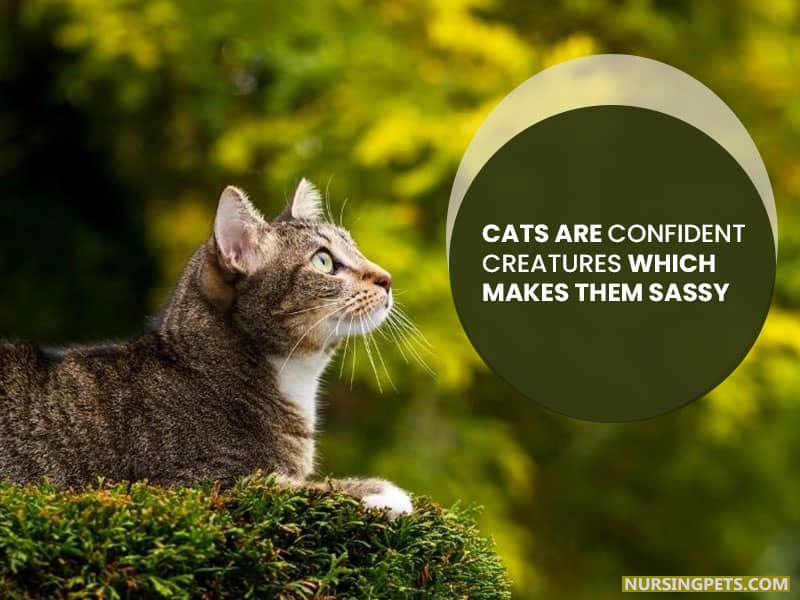
Additionally, cats are very intelligent creatures. They’re quick learners, and they always seem to be one step ahead of their human counterparts. This keen intellect gives them an edge that often comes across as sassiness.
Finally, cats are simply gorgeous. They have a regal beauty that’s unmatched by any other animal. And they know it. This combination of brains and beauty makes for a very sassy cat indeed.
What Does It Mean When A Cat Is Sassy?
The term “sassy” can mean different things to different people. However, a sassy cat generally is independent, confident, and perhaps even a bit feisty. This type of cat is often playful and enjoys a good game of cat and mouse, both figuratively and literally.
Sassy cats are also known for their sharp wit and clever comebacks, which they use to keep their human companions on their toes. While some may see a sassy cat as being attitude-filled or even a little bit bossy, others simply see them as independent spirits who know what they want and aren’t afraid to go after it.
How Can I Make My Cat Less Sassy?
When you have a sassy cat, you may be wondering how to make them less so. Sassy cats are often independent, strong-willed, and can be a bit of a handful. However, there are some things you can do to help make your cat less sassy.
Here are some tips:
01. Encourage positive behavior with rewards
Sassy cats often behave the way they do because they know it gets them attention. If you start rewarding your cat for good behavior, they will be more likely to repeat it. Give them a treat, pet them, or give them some extra attention when they do something you like.

02. Ignore bad behavior
When your cat is being sassy, try to ignore it. Do not give them the attention they are looking for. This can be difficult, but it is important to remain calm and not give in to their demands.
03. Redirect their energy
Sassy cats often have a lot of energy and can be very active. When you find your cat is getting too sassy, try to redirect their energy into something positive. Give them a toy to play with, take them for a walk, or play with them yourself.
04. Spay or neuter your cat
Sassiness is often linked to hormones. If you spay or neuter your cat, they will have less of the hormones that contribute to sassy behavior.
05. Be consistent
It is important to be consistent when dealing with a sassy cat. Do not give in to their demands, and be sure to reward good behavior. In case you are consistent, your cat will eventually learn what is expected of them.
How Do You Get A Sassy Cat To Like You?
Sassy cats are the ones that always seem to have an attitude. If you’ve ever met a sassy cat, you know they can be tough to win over. But, with the right approach, you can get a sassy cat to like you. Here’s how:
Don’t take it personally: A sassy cat’s attitude is not personal. It’s just their nature. So, don’t take it to heart if they hiss or scratch at you.

Give them space: Sassy cats need their space. Don’t try to force your way into their personal space. Give them time to adjust to you, and they will eventually come around.
Be patient: It takes time to win over a sassy cat. Be patient, and don’t give up. Eventually, they will come around and start to like you.
Talking to the cat in a soft: Sassy cats often respond well to kind words, so this is a good way to get the cat to warm up to you.
How Can I Get My Cat To Let Me Hold Her?
Some cats enjoy being held, while others do not. In case your cat is the latter one, there is no need to force her. However, if you would like to try and get your cat to enjoy being held, you can do a few things.
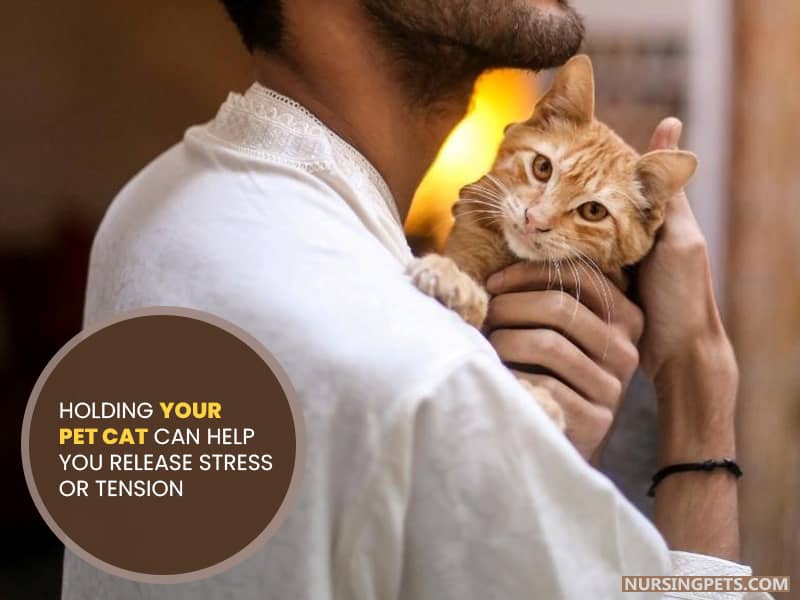
- Start by petting your cat and slowly working your way up to holding her.
- Once you are holding her, be sure to support her weight and keep her close to your body.
- Speak to her softly and pet her while you are holding her.
- If she struggles to get free, let her go and try again another time.
With patience and a little bit of time, your cat may learn to enjoy being held.
Why Do Cats Act Aggressively For No Reason?
It’s a jungle out there for cats. Your feline friend is constantly bombarded with sights, sounds, and smells that can be frightening or overwhelming. Add to that the fact that cats are natural predators, and it’s no wonder they sometimes lash out.
That said, there are a few reasons why your cat might be acting aggressive for no apparent reason. Here are a few possibilities:
01. Fear or Anxiety
Cats are very sensitive to their environment, and anything that disrupts their routine can cause fear or anxiety. This can include changes in the home, such as a new baby or pet, or something as simple as a piece of furniture being moved.
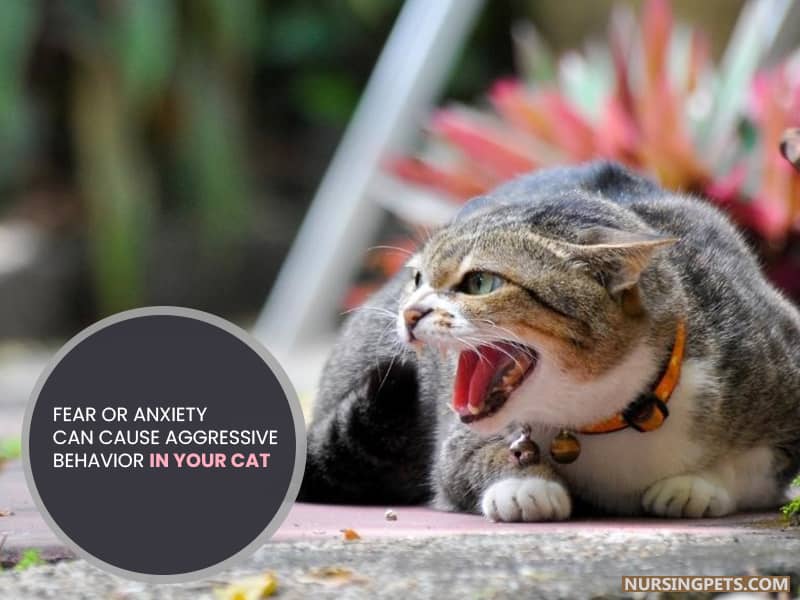
Outside influences, such as construction noise or a new family moving in next door, can also be stressful for cats.
02. Illness or Pain
Cats are experts at hiding pain, but sometimes it manifests as aggression. If your cat is suddenly acting aggressively, it could be a sign that something is wrong. A trip to the vet is to rule out any medical causes.
03. Territoriality
Cats are very territorial creatures and can become aggressive when they feel their territory is threatened. This can happen if there’s a new pet in the home or if you bring home a new piece of furniture that your cat views as an intruder.
04. Redirected Aggression
Sometimes a cat will become aggressive because he’s feeling frustrated or threatened, but he can’t take his aggression out on the source of his frustration. For example, when your cat is outdoors and sees another cat that he can’t get to, he might take his aggression out on you when you come home.
05. Predatory Instincts
Cats are natural predators, and sometimes their predatory instincts can get the better of them. This can happen when your cat is playing too roughly or he’s stalking and attacking your feet or hands.
If your cat is acting aggressively for no apparent reason, it’s important to take him to the vet to rule out any medical causes. Suppose there’s no medical issue, then you’ll need to work on helping your cat feel more secure in his environment.
This may involve providing hiding places, such as cat trees or boxes, and using pheromone diffusers to help reduce stress.
How Do You Tell A Cat You Are Friendly?
The easiest way to tell a cat you are friendly is to approach them calmly and slowly. Avoid making sudden movements or loud noises, as these may startle the cat. Even after that, if the cat reacts furiously, it may not be that friendly.
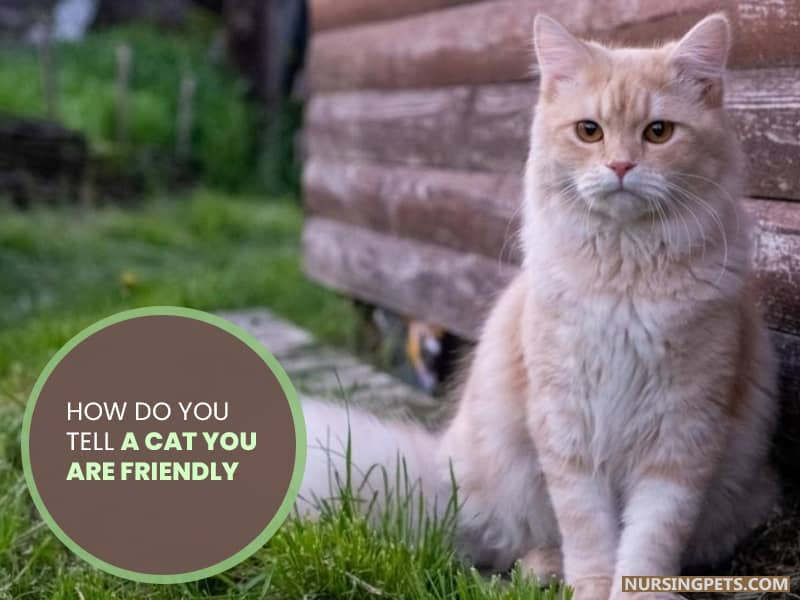
For her, you may be someone suspicious whom she couldn’t trust.
You can also try to feed her. If she accepts the food and meawing at the lower voice, she should be a friendly one.
When cats react aggressively and don’t give friendly body language, they will be hard to crack.
What Are Signs Of An Angry Cat?
It’s not always easy to tell when a cat is angry. They typically don’t show their teeth or hiss like dogs do when angry. However, there are some subtle signs that your cat is angry. In case you see any of the following behaviors, your cat is likely angry:
Flattened ears: When a cat’s ears are flat against its head, it’s a sign that they’re angry or afraid.
Twitching tail: A twitching tail is another indication of a cat’s anger.
Hiding: If your cat is suddenly hiding more than usual, it could be because they’re angry and don’t want to be around people or other animals.
Growling: You may not hear it often, but cats can growl when they’re angry.
Scratching: Scratching is a common sign of anger in cats. If your cat is suddenly scratching furniture or walls more than usual, they may be angry.
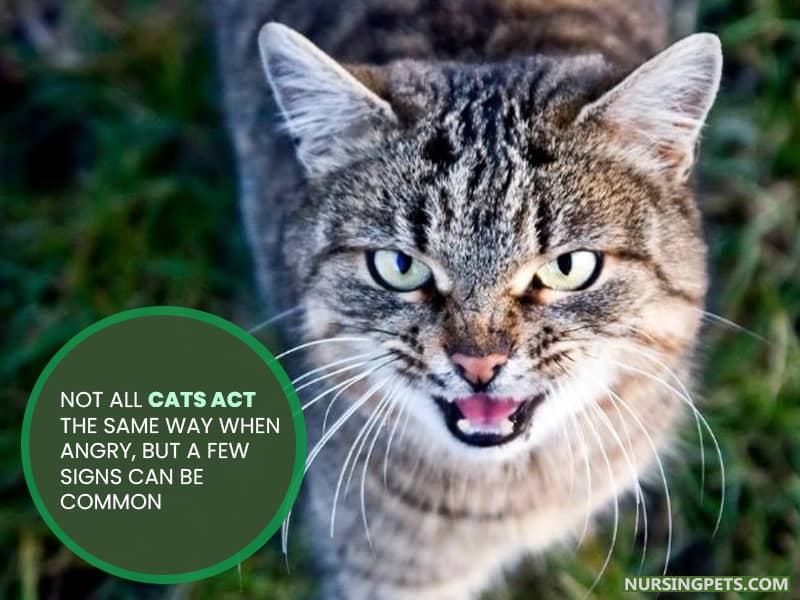
Whenever you see any of these signs, it’s best to give your cat some space. Let them calm down on their own before you try to approach them.
How Do I Stop My Cat Being Feisty?
Are you struggling to keep the peace in your home because your cat is constantly causing trouble? If your once-loving kitty has become a feisty feline, there are a few things you can do to try to improve the situation.
Before you take any steps to stop your cat’s bad behavior, it’s important to first understand what might be causing it. Sometimes, a cat becomes feisty because they’re anxious or stressed. In this case, you’ll need to take some steps to make them feel more comfortable and relaxed.
On the other hand, some cats are simply born with a more aggressive personality. If this is the case, you’ll need to be extra patient and use positive reinforcement to help them learn what behaviors are acceptable.
Here are a few tips to help stop your cat’s feisty behavior:
Establish rules and stick to them: It’s important to be consistent with your cat’s behavior expectations. Set rules for things like scratching furniture or biting, and make sure everyone in your household is on the same page about enforcing them.
Use positive reinforcement: When your cat behaves in a way you approve of, make sure to give them plenty of praise and affection. This will help them understand that they’re behaving in a way that makes you happy.
Avoid punishment: Yelling at or hitting your cat will only serve to make them more anxious and stressed. If they misbehave, simply ignore or remove them from the situation until they calm down.

Give them plenty of exercises: A bored or inactive cat is more likely to act out in a feisty way. Make sure they have plenty of toys to keep them entertained, and take them on regular walks or play sessions.
Consider professional help: If you’ve tried everything and your cat’s aggressive behavior continues, it might be time to consult with a professional. A behaviorist can help you identify the root of the problem and come up with a plan to address it.
Do Cats Have An Attitude Problem?
Sure, cats can be a little sassy. But that doesn’t mean they have an attitude problem. Most of the time, their attitude is simply a reflection of their unique personality.
Cats are independent creatures who like to do things their way. This can sometimes come across as aloof or even arrogant. But it’s simply because they don’t feel the need to conform to our expectations. They’re comfortable in their skin and know what they want.
It doesn’t mean that cats are unemotional, far from it. They just express their emotions in different ways to us. For example, they might not show their affection as openly as a dog, but that doesn’t mean they don’t care about their humans.
Research has shown that cats form strong bonds with their owners and can even suffer from separation anxiety when they’re away from them.
Why Does My Cat Suddenly Have An Attitude?
Your cat’s sudden attitude change could be due to several reasons. Maybe something happened to upset them, or they could be feeling sick. In case your cat has always been friendly and suddenly becomes aggressive, it’s best to take them to the vet to rule out any medical causes.
Here are a few potential reasons for your cat’s attitude change:
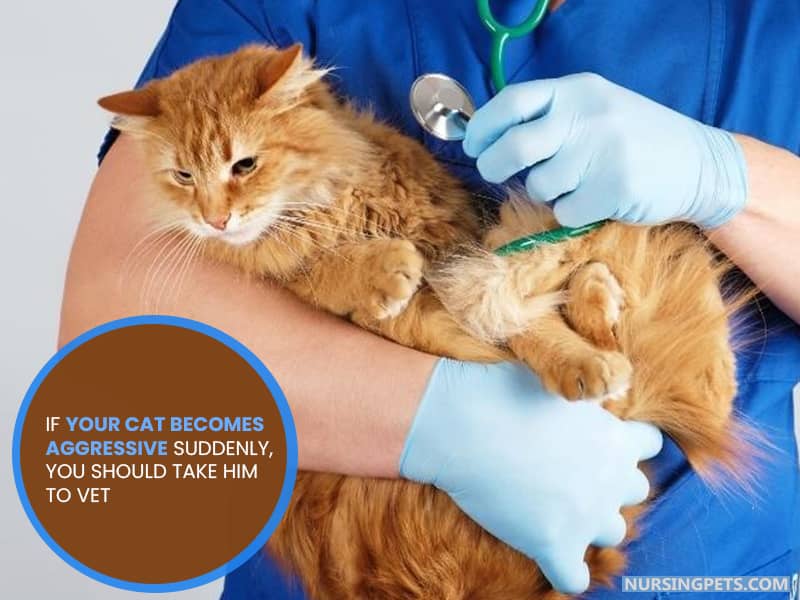
Feeling sick: When your cat is suddenly aggressive, it could be a sign that they’re not feeling well. If they’re also exhibiting other changes in behavior, such as lethargy or a loss of appetite, it’s worth taking them to the vet to get checked out.
Something upset them: Cats are very sensitive creatures, and even something as small as a change in their routine can upset them. If you’ve recently introduced a new pet into the home, or there’s been some construction work going on outside, that could be the cause of your cat’s attitude change.
They’re in the heat: In case your female cat is suddenly aggressive, she could be in heat. Cats in heat often become more vocal and demand more attention. They may also spray urine to mark their territory. If you think your cat is in heat, it’s best to take them to the vet to be spayed.
Feeling threatened: Cats are natural predators, but they can also be quite skittish. When they feel like they’re being threatened by another animal or person, they may become aggressive to defend themselves.
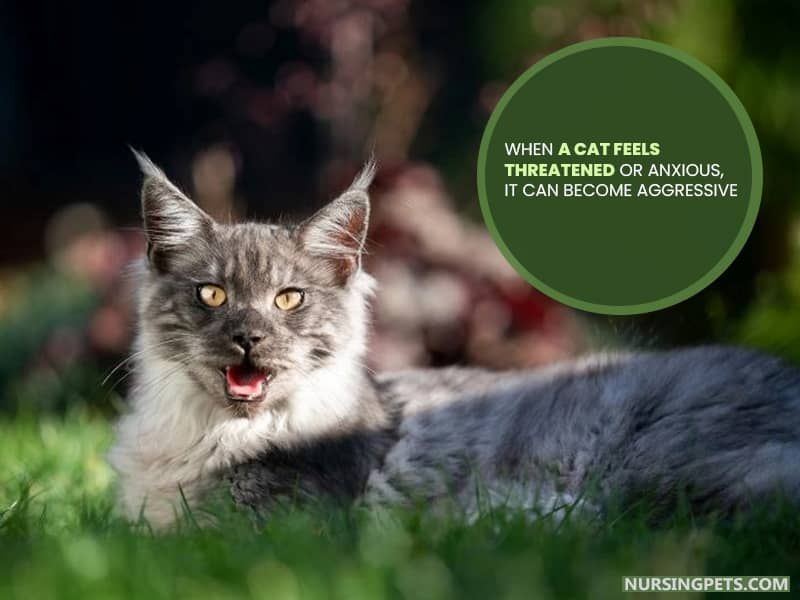
Stressed: Cats can get stressed out just like people do. If they’re feeling overwhelmed, they may lash out. Common causes of stress in cats include changes in their environment, a lack of attention from their owners, and being around other animals.
In case your cat’s attitude change is severe or persistent, it’s best to take them to the vet to rule out any medical causes. Once you’ve identified the reason, you can start to look at other potential causes, such as stress.
If your cat is stressed, there are some things you can do to help them relax, such as providing them with a calm environment, investing in some new toys, and spending more time playing.
How Do You Know When Your Cat Has An Attitude?
It can be tough to tell when your cat is simply having a bad day or if they’re legitimately angry with you. You need to be careful. Otherwise, you could end up on the receiving end of a swipe or a bite. But some telltale signs will let you know when your cat is giving you the silent treatment.
01. Their body language is hostile
If your cat is giving you the stink eye and refusing to make eye contact, that’s a sure sign that they’re angry. Their ears will be flattened against their head, and their tail will be lashing back and forth. They may also hiss or growl when you approach them.

02. They’re not responding to you
When you try to pet them or talk to them, they ignore you. They may even walk away from you or hide under a piece of furniture.
03. They’re being extra destructive
If your cat starts peeing outside the litter box or scratching up your furniture, it’s a sign that they’re angry. They’re trying to send you a message that they’re not happy with the current situation.
04. Not eating
A sure sign that something is wrong is when your cat stops eating. They may not be hungry, but they’re not happy.
In case you see any of these signs, it’s best to give your cat some space. They’ll eventually come around, but in the meantime, you don’t want to end up with a scratch or a bite.
How Do I Fix My Cat’s Bad Attitude?
Your cat’s bad attitude may be due to a number of factors, including boredom, stress, or illness. Fortunately, there are several things you can do to help improve your cat’s mood.
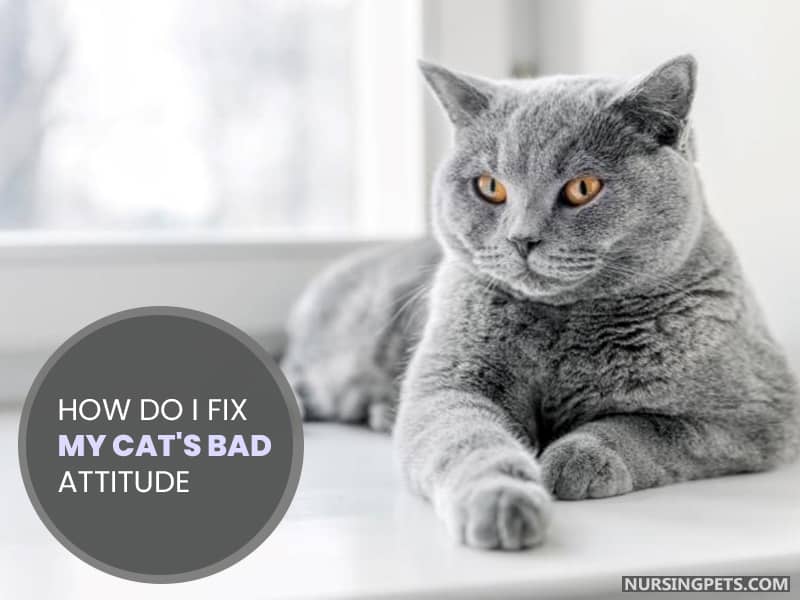
Here are some tips for improving your cat’s attitude:
- Provide your cat with plenty of toys and playtime. A bored cat is often a cranky cat.
- Make sure your cat has a safe, comfortable place to retreat to when they want some alone time.
- Avoid stressful situations, such as loud noises or too much activity in the home.
- Keep your cat’s routine as consistent as possible. Cats like predictability.
- Take your cat to the vet regularly to ensure they are healthy and happy.
Final Word
A cat’s sassiness is usually characterized by an attitude of defiance or contempt. A sassy cat may hiss, growl, or even swat when it doesn’t get its way. This type of behavior is often seen in cats that are spoiled or have been allowed to get away with bad behavior.
Some cats are just born with a feisty personality. And while we don’t know exactly why this is, it likely has something to do with their wild ancestors. After all, in the wild, being sassy can be a survival tactic.
Whatever the reason for their sassiness, one thing is for sure: we love our sassy cats! They’re feisty, independent, and always keep us on our toes.
Image Source: Canva.com/photos

